NFL's best, worst O-lines: Where do Cowboys and Seahawks rank?
— -- It's a classic football precept: Great teams build up front. It's not quite true -- let's be honest, the best thing you can have is a good quarterback -- but good blocking is an important part of a strong NFL offense. The skill players get the headlines and the fantasy football numbers, but offensive linemen break open those big holes for your running backs and keep your quarterback upright so he can throw deep.
On the other hand, when the offensive line is bad, even the best quarterbacks and running backs can struggle to be effective. That has been a big problem for the two teams playing Thursday night, the Los Angeles Rams and Seattle Seahawks. The Rams' young blockers are so poor at opening running lanes that the team's talented running back,? Todd Gurley, is averaging just 3.3 yards per carry. Seattle has struggled to protect Russell Wilson for years, which neutered the Seahawks' offense at midseason when an ankle injury cost Wilson his mobility.
NFL stats are imperfect, and offensive line metrics even more so. Rushing stats are distorted by long runs where the blocking didn't matter after the first few yards. Passing stats are distorted by the fact that some quarterbacks are simply more sack-prone than others. Nonetheless, we do have some metrics that will give us a good idea of which lines have done the most or least to help their teams this season.
To measure the best and worst lines of 2016, I averaged each team's rank in five categories:
1. Adjusted line yards (ALY): A Football Outsiders' metric that splits value between the blocking and the back based on the length of the run, adjusted for situation and opponent.
2. Stuffed rate: How often running backs are stuffed for a loss or no gain, the most blocking-dependent part of ALY.
3. Adjusted sack rate (ASR):?Sacks (and intentional groundings) per pass play, adjusted for situation and opponent.
4. Pressure rate:?How often the quarterback is under duress, including sacks and hurries, according to ESPN Stats & Information charting.
5. Penalties: per game by offensive linemen (including declined and offsetting).
Adjusted line yards were weighted at 150 percent, while penalties were weighted at just 50 percent. Further explanation of the first three categories, with updated numbers, can be found here.
There are a couple of big surprises from these metrics. One of the Thursday night teams doesn't rank near the bottom of the league. And even more surprising, Dallas does not rank at the top of the league. Of course, one set of numbers does not prove the Cowboys don't have the most productive line in the league. It does, however, suggest we're not doing enough to recognize the lines that rank ahead of them.
If you're curious about how all the teams stack up, I put a table ranking them from 1-32 after write-ups for the five best and worst offensive lines.
THE TOP FIVE
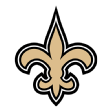
1.? New Orleans Saints
The Saints are sixth in offensive DVOA, and the offensive line is a big reason why. It's a bit of a surprising performance from a group of players who aren't too well-known. Left tackle Terron Armstead has missed half the season with injuries, forcing 2015 first-round pick Andrus Peat to rotate between left tackle and left guard. Most observers thought veteran Jahri Evans looked over the hill when he couldn't make the Seattle roster in preseason, but he returned to the Saints and slotted right back into his old right guard spot. Right tackle Zach Strief has developed into a strong run-blocker but has yet to make a Pro Bowl. Center Max Unger, who came over from Seattle in the Jimmy Graham trade, completes the starting five.
The Saints are dead last in pressure allowed, according to ESPN Stats & Info charting, and they are fifth in adjusted sack rate. Sure, part of the reason the Saints do so well in pass-blocking metrics is that Drew Brees is so good at avoiding sacks and doesn't run into his own pressure. But that doesn't explain why the Saints lead the league in adjusted line yards, or why they've had runners stuffed for a loss or no gain only 14 percent of the time. New Orleans is even tied for the fewest number of penalties by offensive linemen (24).
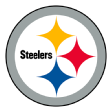
2. Pittsburgh Steelers
This line is certainly better known than the Saints' unit, anchored by 2014 All-Pro center Maurkice Pouncey and 2015 All-Pro right guard David DeCastro. Pittsburgh ranks in the top six for all of the metrics we're measuring here except for penalties. Our game charting over the past couple of years has ranked DeCastro and left guard Ramon Foster in the top 10 for snaps per blown block. And left tackle Alejandro Villanueva has improved in his second season as the starting left tackle.

3. Washington Redskins
Like Pittsburgh, Washington ranks in the top six for all of these metrics except penalties. The standout player has been right guard Brandon Scherff, who has developed into one of the league's top run-blockers in his second season. Washington is also getting good returns on recent draft picks Spencer Long (center) and Morgan Moses (right tackle), both in their third seasons. And Washington has depth, particularly at left tackle, where Ty Nsekhe was impressive when Pro Bowl left tackle Trent Williams missed four games. Overall, nine players have started games on the offensive line for Washington this season.

4. Dallas Cowboys
The Dallas offensive line is well-known and spectacular, particularly the trio of left tackle Tyron Smith, center Travis Frederick?and right guard Zack Martin. They blow open big holes for Ezekiel Elliott, and as a bonus they're also great in short yardage, converting 65 percent of runs on third down, fourth down or the goal line with 1-2 yards to go (second behind the Jets). But the Cowboys don't top this metric, because there has been a surprising amount of pass pressure on rookie quarterback Dak Prescott. ESPN Stats & Info has recorded Prescott under duress on 31 percent of pass plays, which ranks 24th in the league.
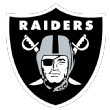
5. Oakland Raiders
The Dallas offensive line is often brought up as a reason why neither Prescott nor Elliott should be MVP. After all, they're getting a ton of help from the five blockers in front of them. But if that's an issue for MVP voters, shouldn't the strong Oakland line be equally important in deciding whether to cast a vote for Derek Carr? Somehow none of the Raiders linemen were chosen for the Pro Bowl last year; that needs to be rectified this year for left tackle Donald Penn, left guard Gabe Jackson?and possibly center Rodney Hudson. The Raiders have the league's lowest adjusted sack rate, with Carr sacked just 13 times this season. They also rank third in pass pressure allowed. The weakness of the line is the same weakness the Oakland Raiders always have: penalties. Oakland leads the NFL with 43 flags on offensive linemen.
THE BOTTOM FIVE
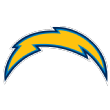
28. San Diego Chargers
Even though the Chargers' linemen are finally staying healthy, they are allowing more sacks and pass pressure than in 2015. San Diego ranks between 22nd and 26th in all five metrics used for this ranking.

29. Carolina Panthers
Cam Newton is taking fewer sacks this season, but otherwise this line has declined across the board. Injuries to Michael Oher and Ryan Kalil are an issue here.
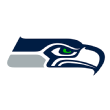
30. Seattle Seahawks
Marshawn Lynch and a healthy Thomas Rawls probably skewed Seattle's run-blocking metrics a little too positively in 2015. This year, their ranks match what fans and scouts see with their eyes. Seattle has allowed quarterback pressure on a league-high 37 percent of dropbacks.

31. Buffalo Bills
The Bills have a strong running game with reasonable blocking numbers (19th in adjusted line yards), but the pass blocking is abysmal, ranking dead last in adjusted sack rate and 31st in pressure rate.
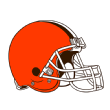
32. Cleveland Browns
The Browns lost two starters in free agency and a third, Joel Bitonio, has missed most of the year with a Lisfranc fracture in his right foot. There's only so much Joe Thomas can do by himself. The only saving grace: The Browns are tied with the Saints and a couple of other teams for the fewest penalties from linemen.

Most surprising team not in the top 10
Using this collection of metrics, the Cincinnati Bengals were the No. 1 line in 2015. This year, with four of the same offensive line starters, the Bengals have dropped to 17th. The decline of Cincinnati's line -- particularly in run blocking, where they've gone from first to 15th in adjusted line yards -- is one of the least-discussed explanations for why the team will miss the playoffs for the first time since 2010.
Most surprising team not in the bottom five
The Rams can't make big holes for Gurley, but they don't finish at the bottom of our run-blocking metrics, because they don't let Gurley get tackled in the backfield as much as some other running backs. Only 20.8 percent of Los Angeles runs are stopped for a loss or no gain, which is 21st in the league. The pass protection also hasn't been as poor as you would think, with the Rams ranking 18th in pressure rate allowed and 25th in adjusted sack rate.